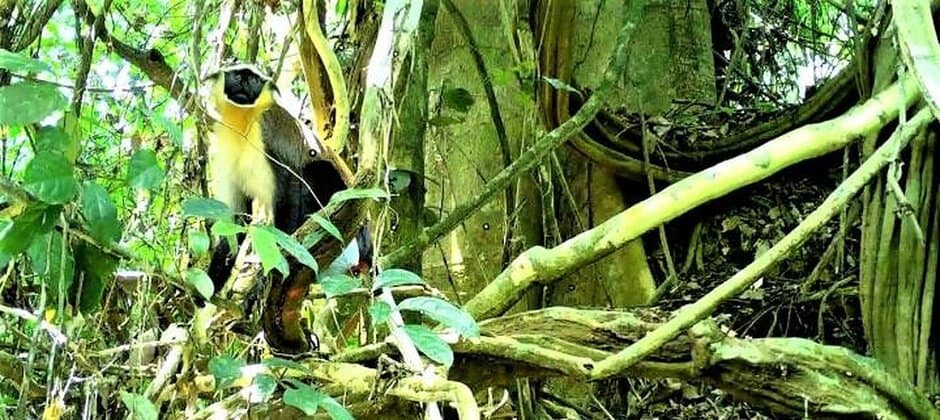Share this article
Watch: Cameras confirm rare dryas monkeys in Congo
Dryas monkeys prefer dense vegetation in thickets of secondary forest, which means the primates are difficult to detect in their native habitat in the jungles of the Democratic Republic of the Congo. As a result, little is known about these monkeys’ native range. But researchers from Florida Atlantic University and Congolese researchers from the FZS-Lomami Project managed to capture footage of dryas monkey (Cercopithecus dryas), which are considered endangered by the International Union for Conservation of Nature, using non-flash camera traps deployed from 2014 to 2019. The photos they captured confirmed the monkeys’ presence in seven locations in Lomami National Park and the surrounding area — over a total of 3,453 square kilometers, according to a study published recently in Oryx. The research also suggested that the monkeys were mostly found in the understory. “Our camera-trap placements detected dryas monkeys almost exclusively in the understory across all surveys, regardless of canopy structure, which supports our hypothesis that the species appear to prefer structurally complex understories and forest edges,” said Daniel Alempijevic, a doctoral student at FAU.
Header Image: A male dryas monkey captured by one of the camera traps placed on a tree in the Democratic Republic of the Congo. Credit: Florida Atlantic University, Primatology Lab








